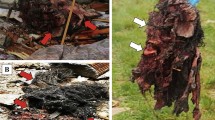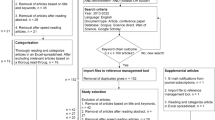Abstract
The biomechanics and efficacy of personal protective equipment in mitigating injuries from blast overpressure remain unclear. The objectives of this study were to define intrathoracic pressures in response to blast wave (BW) exposure and biomechanically evaluate a soft-armor vest (SA) at diminishing these perturbations. Male Sprague–Dawley rats were instrumented with pressure sensors in the thorax and were exposed laterally to multiple exposures ranging from 33 to 108 kPa BW with SA and without SA. There were significant increases in rise time, peak negative pressure, and negative impulse in the thoracic cavity compared to the BW. Esophageal measurements were increased to a greater extent when compared to the carotid and the BW for all parameters (except positive impulse, which decreased). SA minimally altered the pressure parameters and energy content. This study establishes the relationship of external blast flow conditions and intra-body biomechanical responses in the thoracic cavity of rodents with and without SA.







Similar content being viewed by others
References
Axelsson, H., and J. T. Yelverton. Chest wall velocity as a predictor of nonauditory blast injury in a complex wave environment. J. Trauma Acute Care Surg. 40:31S-S37, 1996.
Belmont, P. J., G. P. Goodman, M. Zacchilli, M. Posner, C. Evans, and B. D. Owens. Incidence and epidemiology of combat injuries sustained during “the surge” portion of operation Iraqi Freedom by a US Army brigade combat team. J. Trauma Acute Care Surg. 68:204–10, 2010.
Boutillier, J., N. Prat, S. De Mezzo, P. Magnan, and P. Naz. Blast-related lung injury risk estimation based on chest wall velocity. Hum. Factors Mech. Eng. Defense Saf. 5:1–9, 2021.
Clemedson, C. J., and A. Jönsson. Transmission of elastic disturbances caused by air shock waves in a living body. J. Appl. Physiol. 16:426–430, 1961.
Clemedson, C. J., and H. Pettersson. Propagation of a high explosive air shock wave through different parts of an animal body. Am. J. Physiol. Legacy Content. 184:119–26, 1955.
Eskridge, S. L., C. A. Macera, M. R. Galarneau, T. L. Holbrook, S. I. Woodruff, A. J. MacGregor, D. J. Morton, and R. A. Shaffer. Injuries from combat explosions in Iraq: injury type, location, and severity. Injury. 43:1678–1682, 2012.
Heyburn, L., R. Abutarboush, D. Goodrich, R. Urioste, A. Batuure, J. Wheel, D. M. Wilder, P. Arun, S. T. Ahlers, J. B. Long, and V. S. Sajja. Repeated low-level blast acutely alters brain cytokines, neurovascular proteins, mechanotransduction, and neurodegenerative markers in a rat model. Front. Cell. Neurosci. 15:1–11, 2021.
Human Engineering Lab, Aberdeen Proving Ground. The propagation of air shock waves on a biophysical model. Report No. TM-17–61, 1961.
Ivey, K. M., C. W. White, T. E. Wallum, J. K. Aden, J. W. Cannon, K. K. Chung, J. D. McNeil, S. M. Cohn, and L. H. Blackbourne. Thoracic injuries in US combat casualties: a 10-year review of Operation Enduring Freedom and Iraqi Freedom. J. Trauma Acute Care Surg. 73:S514–S519, 2012.
Keneally, R., and D. Szpisjak. Thoracic trauma in Iraq and Afghanistan. J. Trauma Acute Care Surg. 74:1292–1297, 2013.
Lichtenberger, J. P., A. M. Kim, D. Fisher, P. S. Tatum, B. Neubauer, P. G. Peterson, and B. W. Carter. Imaging of combat-related thoracic trauma–blunt trauma and blast lung injury. Mil. Med. 18:e89-96, 2018.
Lovelace Foundation for Medical Education and Research. Shock tube studies of the effects of sharp-rising, long-duration overpressures on biological systems. Technical Progress Report No. TID-6056, 1959.
Lovelace Foundation for Medical Education and Research. Mortality in small animals exposed in a shock tube to" sharp"-rising overpressures of 3–4 msec duration. Technical Progress Report No. DASA-1242, 1961.
Lovelace Foundation for Medical Education and Research. A shock tube utilized to produce sharp rising overpressures of 400 milliseconds duration and its employment in biomedical experimentation. Technical Progress Report No. DASA-1246, 1961.
Lovelace Foundation for Medical Education and Research. The overpressure-duration relationship and lethality in small animals. Technical Progress Report No. DASA-1325, 1962.
Lovelace Foundation for Medical Education and Research. The tolerance of cattle to ''long''-duration reflected pressures in a shock tube. Technical Progress Report No. DASA-1855, 1966.
Lovelace Foundation for Medical Education and Research. Air-blast studies with eight species of mammals. Technical Progress Report No. DASA-1854, 1966.
Lovelace Foundation for Medical Education and Research. The relationship between selected blast-wave parameters and the response of mammals exposed to air blast. Technical Progress Report No. DASA-1860, 1966.
Lovelace Foundation for Medical Education and Research. Estimate of man's tolerance to the direct effects of air blast, 1968.
National Institute of Justice (NIJ), US Department of Justice, Office of Justice Programs, United States of America. Public Safety Bomb Suit Standard, NIJ Standard-0117.01, 2016.
National Research Council. Review of Department of Defense test protocols for combat helmets, 2014.
Owens, B. D., J. F. Kragh Jr., J. C. Wenke, J. Macaitis, C. E. Wade, and J. B. Holcomb. Combat wounds in operation Iraqi Freedom and operation Enduring Freedom. J. Trauma Acute Care Surg. 64:295–299, 2008.
Pape, R., K. R. Mniszewski, and A. Longinow. Explosion phenomena and effects of explosions on structures. I: Phenomena and effects. Pract. Period. Struct. Design Constr. 15:135–40, 2010.
Phillips, Y. Y., T. G. Mundie, J. T. Yelverton, and D. R. Richmond. Cloth ballistic vest alters response to blast. J. Trauma. 28:S149–S152, 1988.
Ritzel, D. V., S. Van Albert, V. Sajja, and J. Long. Acceleration from short-duration blast. Shock Waves. 28:101–114, 2018.
Sajja, V., P. Arun, S. Van Albert, and J. Long. Rodent model of primary blast-induced traumatic brain injury: guidelines to blast methodology. In: Pre-clinical and Clinical Methods in Brain Trauma Research, edited by A. Srivastava, and C. Cox. New York: Humana Press, 2018, pp. 123–138.
Sajja, V. S., J. K. Statz, P. B. Walker, I. D. Gist, D. M. Wilder, S. T. Ahlers, and J. B. Long. Pulmonary injury risk curves and behavioral changes from blast overpressure exposures of varying frequency and intensity in rats. Sci. Rep. 10:1–11, 2020.
Shively, S. B., and D. P. Perl. Traumatic brain injury, shell shock, and posttraumatic stress disorder in the military—past, present, and future. J. Head Trauma Rehabil. 27:234–239, 2012.
Skotak, M., F. Wang, A. Alai, A. Holmberg, S. Harris, R. C. Switzer, and N. Chandra. Rat injury model under controlled field-relevant primary blast conditions: acute response to a wide range of peak overpressures. J. Neurotrauma. 30:1147–1160, 2013.
Sundaramurthy, A., A. Alai, S. Ganpule, A. Holmberg, E. Plougonven, and N. Chandra. Blast-induced biomechanical loading of the rat: an experimental and anatomically accurate computational blast injury model. J. Neurotrauma. 29:2352–2364, 2012.
Acknowledgments
Disclaimer: Material has been reviewed by the Walter Reed Army Institute of Research. There is no objection to its presentation and/or publication. The opinions or assertions contained herein are the private views of the author, and are not to be construed as official, or as reflecting true views of the Department of the Army or the Department of Defense. Research was conducted under an approved animal use protocol in an AAALAC International-accredited facility in compliance with the Animal Welfare Act and all other federal statutes and regulations relating to animals and experiments involving animals, and adheres to principles stated in the Guide for Care and Use of Laboratory Animals, NRC Publication, 2011 edition.
Funding
This research is funded by CDMRP-PRMRP research program under award W81XWH1920058.
Data Availability
Access to the complete data set can be obtained through a material transfer agreement by contacting the corresponding author.
Competing Interests
The authors declare that the research was conducted in the absence of any commercial or financial relationships that could be construed as a potential conflict of interest.
Author information
Authors and Affiliations
Corresponding author
Additional information
Associate Editor Jillian Urban oversaw the review of this article.
Publisher's Note
Springer Nature remains neutral with regard to jurisdictional claims in published maps and institutional affiliations.
Supplementary Information
Below is the link to the electronic supplementary material.
Rights and permissions
About this article
Cite this article
McNeil, E.M., Reilly, M.J., Wilder, D.M. et al. Soft-armor Vest Effectiveness and Intrathoracic Biomechanics in Rodents Exposed to Primary Blast. Ann Biomed Eng 51, 1616–1626 (2023). https://doi.org/10.1007/s10439-023-03174-5
Received:
Accepted:
Published:
Issue Date:
DOI: https://doi.org/10.1007/s10439-023-03174-5




